“What a magnificent piece!”
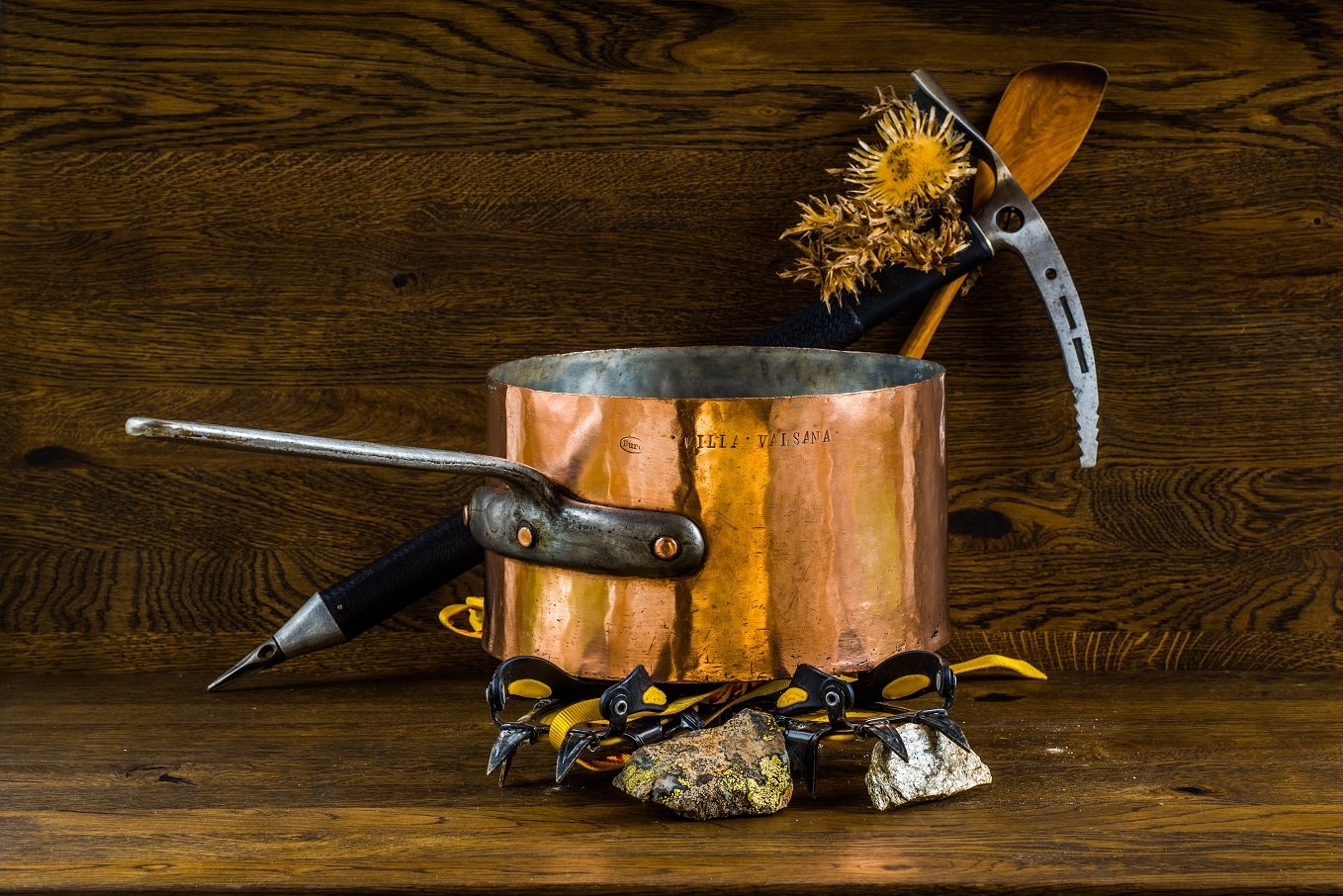
VFC says: Please enjoy this marvelous post by Martin!
When I found this pan, my heart immediately jumped for several reasons. First of all there was the stamp of a Swiss coppersmith Anton Vesti from Davos Platz resort, who was completely unknown to me, supplemented with the year 1940, which is another rarity.

The stamp on the opposite side of the pan, which suggested a villa or a hotel as the owner and which was supplemented with the beautiful, symbolic name “Valsana” (healthy valley), immediately triggered a number of associations in my head and heart.

I used to be out and about in the Alps a lot, sometimes hiking on easy tours, sometimes mountaineering to more demanding destinations. Everyone knows the saying “the journey is the goal”, but if you are honest, you ideally want to reach the summit on a mountain tour. But the most important goal is a healthy return to the valley, i.e. to Valsana. After age and health increasingly limited me, I had to reorient myself and today I am content with cycling and swimming.
This pan, with its amazing weight, reminded me of my numerous tours in the Alps, my neighbors so to speak. I now like living in the valley and am grateful for what I experienced and for the luck I had on my tours with my friends and sometimes alone.
Dimensions and weight of the pan
The pan is 25.5 cm diameter by 15 cm tall, 2 mm at the rim, with hammered sides.

The base piece has been welded on and is 7 mm thick. The pan weighs 6.25 kg.

The handle is cast iron attached with 3 rivets.


The shape of the handle is reminiscent of early versions of “Schwabenland” pans. The straight course and the wider smooth shape offers a good possibility of support with the forearm when lifting. Without this option, I would have trouble lifting the pan.

There is one other small stamp worth mentioning: “Duro” (hard) in an oval. It probably indicates the durability of the pan. In fact, this pan is likely to last for generations.

The tinning is still surprisingly good. Maybe I’ll make a pot-au-feu or something else with long braising or cooking times in it, where the thick bottom should be an advantage.

Who was Anton “Toni” Vesti?
 Of course, I wanted to find out more about this Anton Vesti, but my usual research methods were unsuccessful. So I sent an email to the Davos municipal office. Maybe someone there could help me. After all, he was a coppersmith and citizen of Davos. To my surprise, I received a reply from the head of the documentation library the very next day. The lady sent me a short but substantial article about Anton Vesti in the “Davoser Revue”, Volume 54, No. 4, 1979, pages 207ff. (Yes, the Swiss are that thorough!) There, Anton is lovingly called “Toni” and his interesting life story in difficult times is described. Even two photos are included in the article. The lady also mentioned that one of Vesti’s sons was a famous ski racer.
Of course, I wanted to find out more about this Anton Vesti, but my usual research methods were unsuccessful. So I sent an email to the Davos municipal office. Maybe someone there could help me. After all, he was a coppersmith and citizen of Davos. To my surprise, I received a reply from the head of the documentation library the very next day. The lady sent me a short but substantial article about Anton Vesti in the “Davoser Revue”, Volume 54, No. 4, 1979, pages 207ff. (Yes, the Swiss are that thorough!) There, Anton is lovingly called “Toni” and his interesting life story in difficult times is described. Even two photos are included in the article. The lady also mentioned that one of Vesti’s sons was a famous ski racer.
Anton Vesti was born in 1912 in Sargans, Canton St. Gallen. His apprenticeship was with Master Rubischung in Altdorf. After 3.5 years, he graduated with a very good grade. Then years of travel to gain more experience — a very difficult time due to the economic crisis in the 1930s.
First job with master Bärtsch in Chur. After six months Vesti had to move on due to lack of work. Vesti rode his “Velo” (Swiss word for bicycle) all over Switzerland, back and forth. Nowhere did he find long-term work. He had to settle for a tip and then move on. He could spend the night mostly in journeymen’s houses.
 The last tour took the journeyman Vesti to the canton of Graubünden. His goal was the hotels there. In “Dorf” (district of Davos) he met a man who was loading copper goods onto a handcart. This encounter with the coppersmith Luzi Manzoni brought about the turning point. The history of the Manzoni clan has so far only been researched in fragments. But some of these coppersmiths are among the most important in Switzerland.
The last tour took the journeyman Vesti to the canton of Graubünden. His goal was the hotels there. In “Dorf” (district of Davos) he met a man who was loading copper goods onto a handcart. This encounter with the coppersmith Luzi Manzoni brought about the turning point. The history of the Manzoni clan has so far only been researched in fragments. But some of these coppersmiths are among the most important in Switzerland.
Manzoni hired Vesti in September 1935. Manzoni’s seven sons also worked in the workshop as coppersmiths. Just one year later, Manzoni moved to Arosa and offered the young coppersmith Vesti his house, stables, and workshop for sale. With the help of parents, siblings and friends, Vesti was able to take the risk in 1936.
In the hotel kitchens there was a lot of copper dishes to be repaired and re-tinned. Mountains of casseroles were picked up and processed. As a trained coppersmith, Vesti also made his own pots. But the competition was fierce, forcing Vesti to look for ajob with a plumber three days a week.
Vesti met his future wife Anna Beck on a sleigh ride. They married in autumn 1941. Six of their own children and one godchild were raised in they home, Villa Lydia. “My husband was always first and foremost a craftsman; he was always thirty years behind with the awards for his work,” said Ms. Vesti. So she also had to take care of her husband’s business to make ends meet for the family. The interviewer and author of the article in the Davoser Revue finally advised Vesti: “Toni, stop tinning and create something new!”
Vesti continued to be active for a few more years, as evidenced by a 1984 roasting dish. I do not know when Anton Vesti died.
The journey to Villa Valsana
 During my first research, the search engine virtually forced me to Arosa and the Hotel Valsana there. On the web I could find a lot of information and some old photos about this 4 star sport hotel with its 100-year history, but no reference to a “Villa Valsana.” My imagination created a villa in my mind’s eye, which could have been either the origin of this hotel or at least an outbuilding for the management of the hotel. To verify this assumption, I contacted the hotel management and received a very friendly answer only a few days. Consultation had been held with the CEO of the hotel group in Zurich, as he has the deepest insight into the history of the Arosa hotels. In fact, there was a outbuilding called “Villa Valsana”, but it served as a staff building. At times it also housed the laundry. Although the Hotel Valsana has a lot of stamped copper and silver, a stamp with Villa Valsana is unknown. After all, my guess was not completely off the mark.
During my first research, the search engine virtually forced me to Arosa and the Hotel Valsana there. On the web I could find a lot of information and some old photos about this 4 star sport hotel with its 100-year history, but no reference to a “Villa Valsana.” My imagination created a villa in my mind’s eye, which could have been either the origin of this hotel or at least an outbuilding for the management of the hotel. To verify this assumption, I contacted the hotel management and received a very friendly answer only a few days. Consultation had been held with the CEO of the hotel group in Zurich, as he has the deepest insight into the history of the Arosa hotels. In fact, there was a outbuilding called “Villa Valsana”, but it served as a staff building. At times it also housed the laundry. Although the Hotel Valsana has a lot of stamped copper and silver, a stamp with Villa Valsana is unknown. After all, my guess was not completely off the mark.
Since the Swiss search engine with the funny name www.swisscows.com didn’t give any better results either, I had to develop another strategy.
At some point I came across two postcards, one dated 1914, showing a chalet called Villa Valsana, Valzeina. By the way, also the name Valzeina means “healthy valley”.


The place Valzeina could be found quickly. Valzeina is a scattered settlement in the area of Prättigau/Davos, Canton Graubünden (Grisons). The region was first settled by Rhaeto-Romans and later by Walsers. Even today, Rhaeto-Romanic is spoken there in addition to Schwitzer German. Many place names point to this origin.



With the help of digitized maps and on satellite and aerial photographs, I found not only the parcel Valsana, but also a building erected on it.



Aerial photographs allowed me to travel back in time from 1945 to 2020. The building later identified as Villa Valsana can first be seen in 1955 and most recently with some changes in 2019.


On the historical maps of Valzeina, which were drawn up between 1880 and 1957, the building we were looking for was not yet to be found. However, the inscription obscured some of the details. By comparing the images on various postcards with current photos and aerial photos, the building could be clearly identified.


The most helpful photo I could take from a 2017 tour report on www.flickr.com. On it you can see the high degree of consistency of architectural details, although the villa had been renovated and expanded at some point. The roof was renewed and now harmoniously covers the balcony reminiscent of a winter garden on the east side of the house, and a newly added winter garden on the west side of the house. On this side the building was additionally enlarged by an extension. The windows were newly glazed and three of the windows on the south side were decorated with small gables. However, all the main historical style elements and woodwork were preserved. Villa Valsana is a house built in the “Swiss style”.

Swiss chalet style (German: Schweizerstil, Norwegian: Sveitserstil) is an architectural style of Late Historicism, originally inspired by rural chalets in Switzerland and the Alpine (mountainous) regions of Central Europe. The style refers to traditional building designs characterised by widely projecting roofs and facades richly decorated with wooden balconies and carved ornaments. It spread over Germany, the Dual Monarchy of Austria-Hungary, Italy, France and Scandinavia during the Belle Époque era.
The style is characterized by:
- gabled roofs with wide eaves;
- the “Swiss gable”, a floating gable set in front of the gable;
- balcony resembling a winter garden; roofed, partly open to the garden side, partly closed with windows placed side by side;
- exposed construction beams, including large brackets;
- decorative carving and moldings;
- weatherboarding, usually painted, often in bright colors.
Villa Valsana is large and representative enough to have a well equipped kitchen. Davos is only about an hour’s drive away. Valzeina, by the way, was already accessible by postal bus in 1928 and thus also connected to the excellent Swiss railroad network. The residents of Villa Valsana could therefore have commissioned pans from Anton Vesti, Davos.


Since the house has been maintained for over 100 years and the characteristic architectural style with the wood carvings has been preserved, I assume that the chalet remained in the possession of one family for all these decades and was used as a vacation home. In order to find out even more about Villa Valsana and to be able to conclusively determine the former affiliation of my pan to the kitchen of this house, I would probably have to travel to Valzeina myself. But currently I am content to have the pan integrated into my collection as a greeting from the Alps.
VFC says: Martin, thank you so much for this lovingly researched and beautifully photographed post! The Vesti pan is gorgeous, and with its ultra-thick base, also a fantastic cooking tool. As you note, that “Duro” stamp seems likely to have referred to that extra thickness. This piece is in lovely shape and looks to be built for many more years of service. Congratulations on the acquisition, and thank you for bringing the story of Anton Vesti to light!
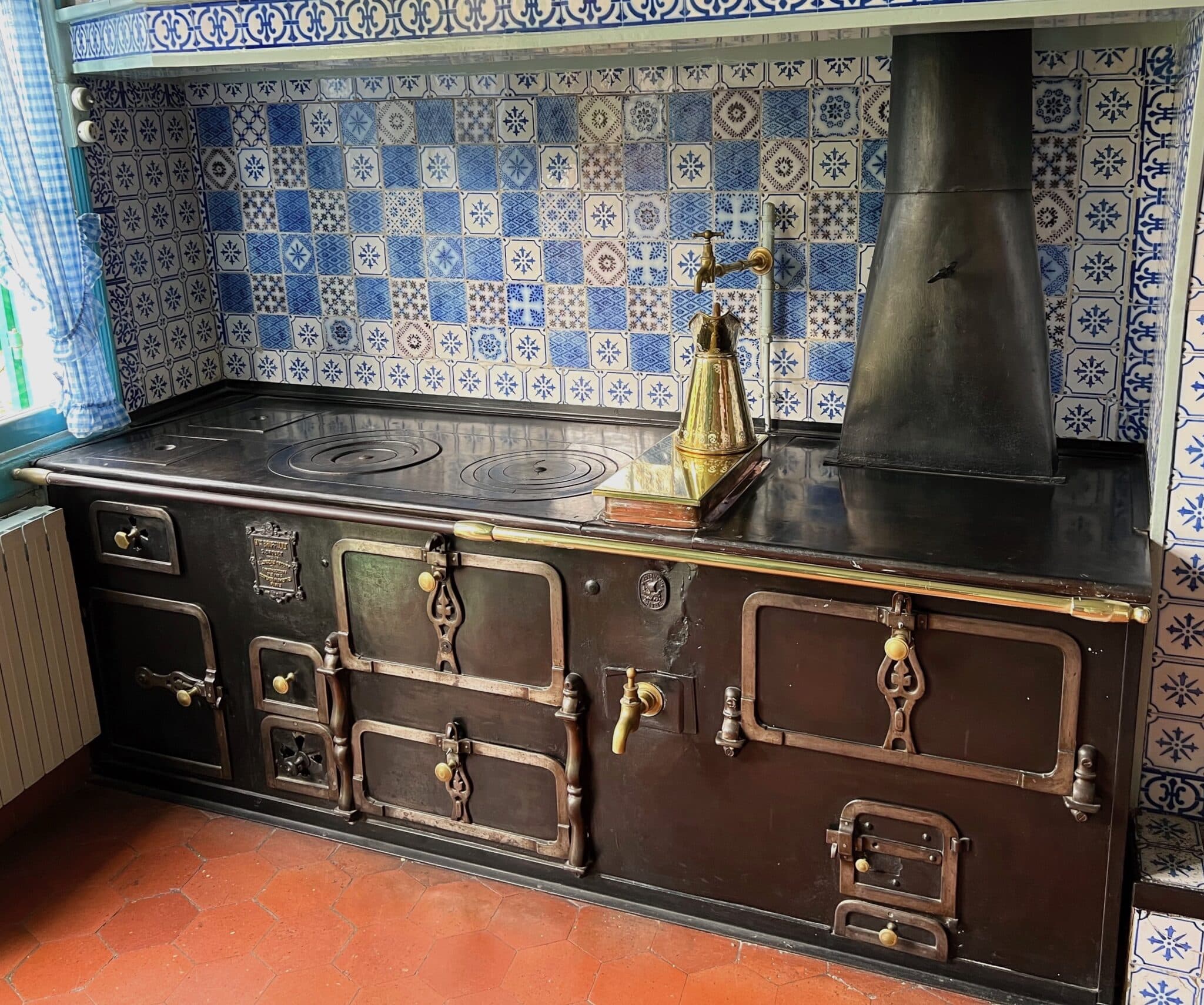
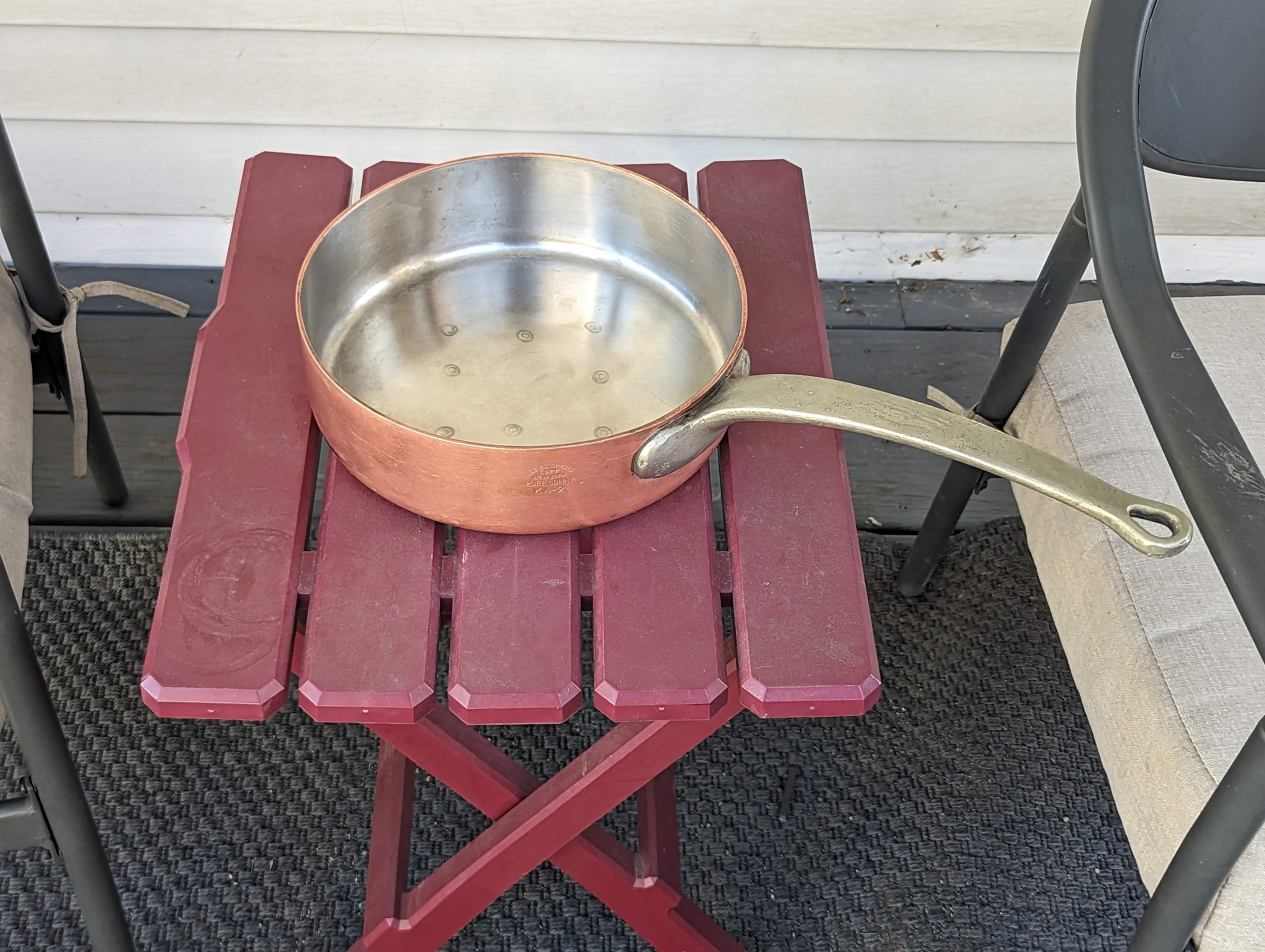
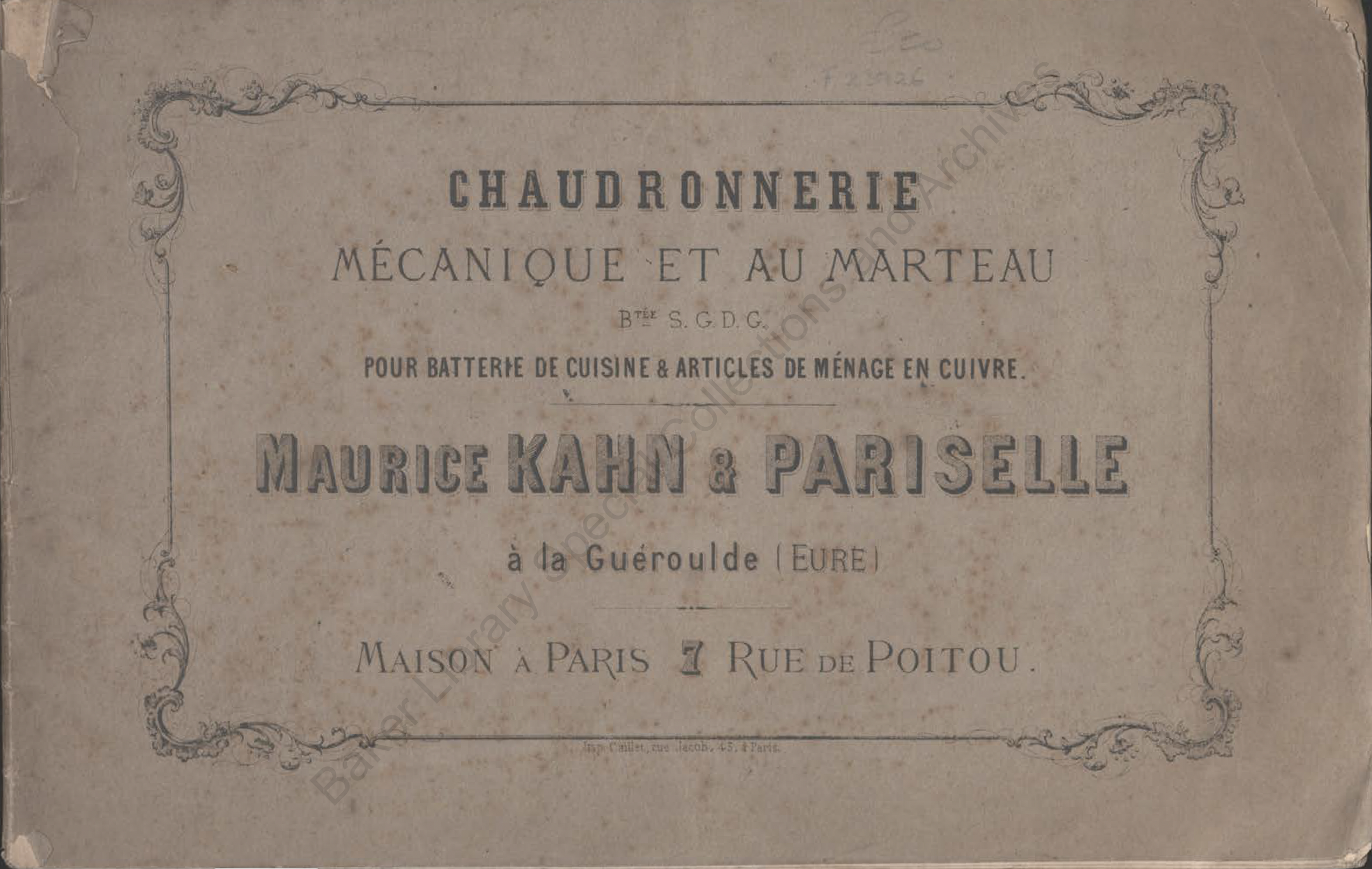
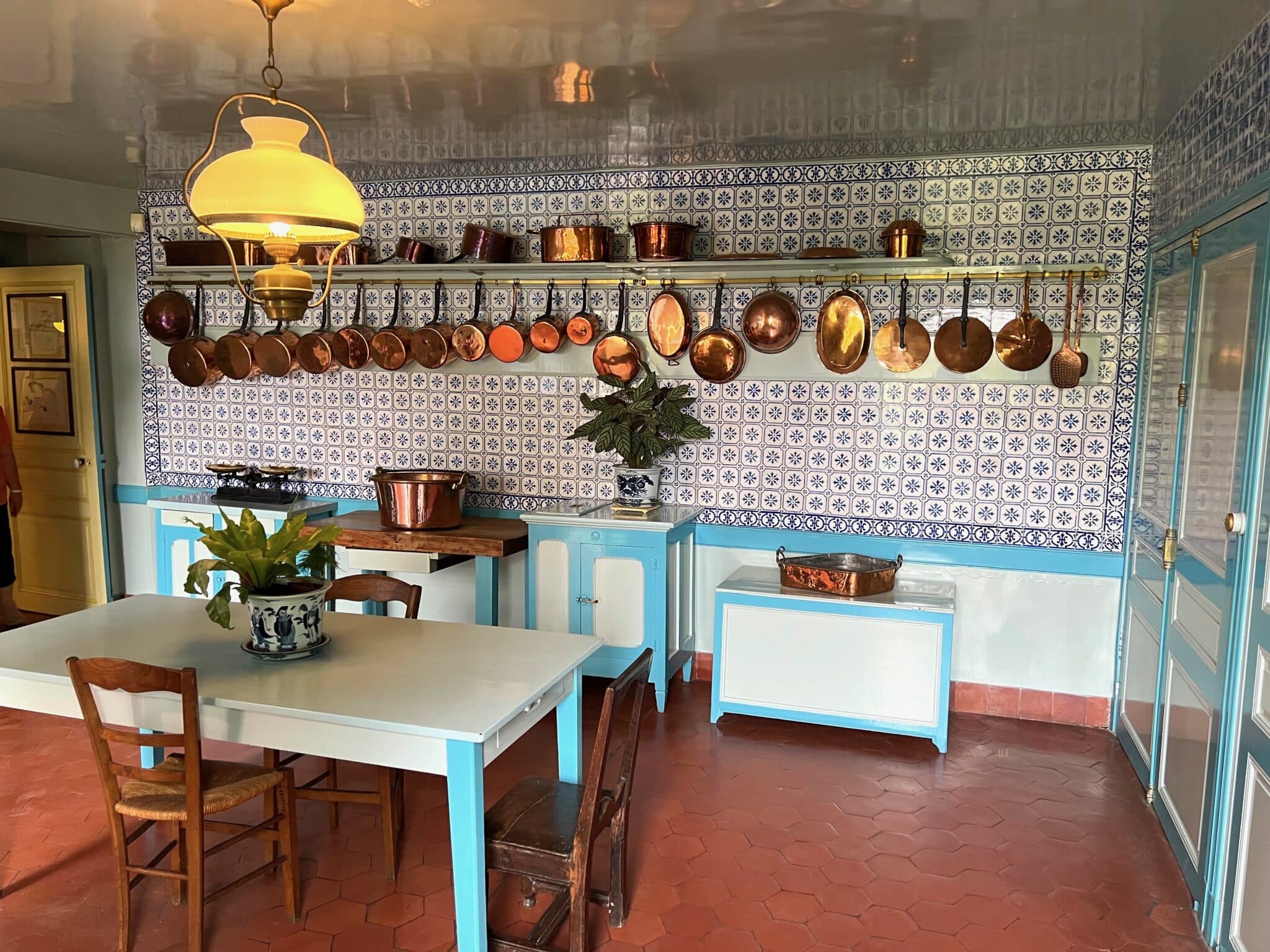
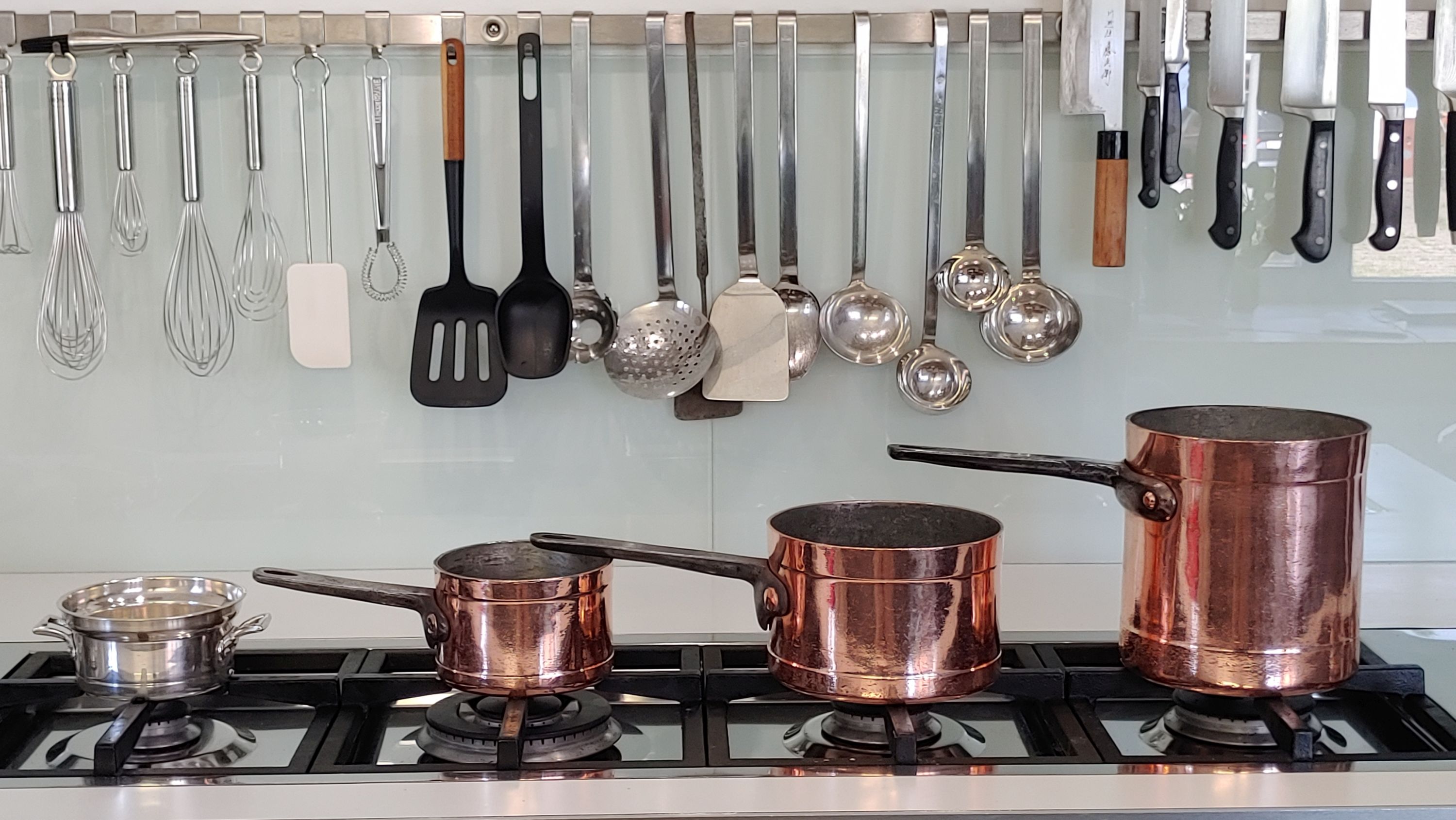
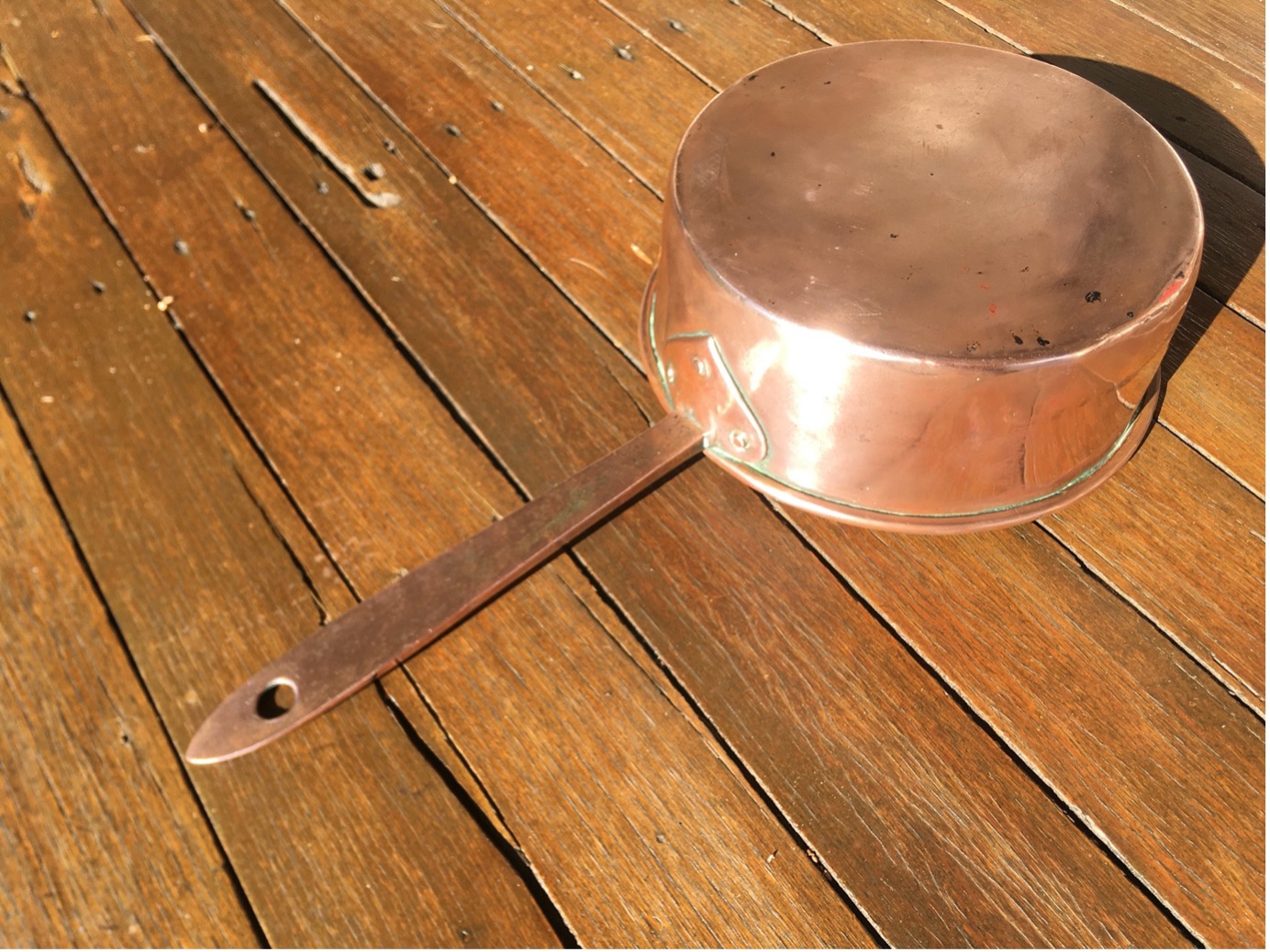
Hello Martin, thank you for your in depth article about Anton Vesti.
About two weeks ago I bought a very beautiful super heavy pan stamped “Anton Vesti” on the German marketplace Kleinanzeigen. I was astound by the weight an thickness of the pan. It is 28cm in diameter and ~6,2kg heavy. I also tried to find anything about Anton Vesti, but everything was a dead end and until now I was still in the dark.
So thank you again for this article!
Hi Anton, I had noticed this pan too – it’s still on my Kleinanzeigen watch list. Someone has liquidated there his B&B and wanted to get rid of this great pan. You were faster! 🙂
Hello Anton, thank you very much for your support. Several people were probably keen on this pan. Oddly enough, this offer had escaped me. Good for you. Congratulations! Does your pan also have a thick bottom welded on?
Very nice find Martin. The research you did to keep the story with your pan is tremendous. Well done. Oh, and the pan is beautiful.
Loved traveling through time and enjoying this pan and its Alpine history!
Wow! Such in-depth research Martin. Thank you for sharing such descriptive information, the photos of the lovely pan that started it all and all the photos that make the information come to life.
Thank you, Sus!
Thank you, Chris and Handtinner!
Researching an unknown coppersmith or an unusual stamp is similar to mountain climbing. The greater the effort that had to be expended to reach the goal, the more impressive the experience that I was able to gain. Errant paths are part of it and can even deepen the experience. On my stops along the way, I met some lovely people who were very helpful and whom I would like to thank. Without the extremely detailed Swiss maps, which cover every nook and cranny of this country, I would not have been able to find the small parcel of Valsana. In general, since digitization in Switzerland is very advanced, I was able to search all the cantons of Switzerland, numerous museums and libraries for a Villa Valsana or just for Valsana. I am therefore pretty sure that there is no other Valsana in Switzerland.
Many of the old black and white photos I tracked down brought back memories of quiet valleys and lonely peaks in the Alps. Not far from Valzeina, in St. Antönien, during a ski tour, I saw horse-drawn sleighs transporting not tourists but goods, and I myself spent the night in a barn instead of a mountain hut. Since the hayloft belonged to an ermine, it disturbed my night’s rest and stole my cheese as an overnight fee. It’s ok buddy!
In the meantime I have received further news from Switzerland. An employee of the municipal administration of Grüsch put me in touch with the current owner of Villa Valsana. The latter was thankfully able to add some pieces of the puzzle to the history of the house.
The villa was built in 1904 as a boarding house (family-style pension) and was used in this way until 1940. So the postcard I found shows the villa in the year the boarding house was founded. After that, the house is said to have remained unused for decades until it was rebuilt in the 1980s by the new owner, a folk musician and clarinet teacher who came from Valzeina. In 2012, Villa Valsana was purchased by the current owner and is now the permanent residence of his family. In the kitchen there is an old stove that was fired with wood. It can be assumed that copper pots were used to cook on this. However, there are no other copper pans in the house. So the history of the villa was not as continuous as I had imagined.
Since my pan is stamped 1940 as the year of manufacture, this date does not conclusively match the history of the house. Why, of all things, was another pan purchased in the year the boarding house was closed? Was the house actually completely unused after 1940? A vacancy over 40 years would be extremely strange and economically hardly justifiable, especially in a region of high tourist interest. Perhaps the local administration can once again help fill the gap between 1940 and 1980.
Hi Martin, once again a superbly researched article on a great piece of copper culture. Many thanks for it!
Thank you very much, Gerhard. I am always happy when I discover a previously unknown coppersmith with interesting pans and can research about him. During this research, I met an amazing number of friendly and helpful people who supported my request. Just today I received another message from an employee of the municipal administration of Grüsch, who gave me another contact to a person who may be able to help me to find the former owner of my pan.
After a detailed telephone conversation with the second owner of Villa Valsana, Anton H., a 94-year-old but still very vital gentleman, the above-mentioned temporal gap could be filled. Although the villa was no longer used full-time as a boarding house after 1940, it continued to be used as a vacation home on a daily and weekly basis. Thus, the former affiliation of the pan with Villa Valsana can be clearly confirmed. On occasion I will gladly accept the kind invitation of Mr. H. and visit him in Valzeina.
Electricity didn’t reach 90% of Swiss households until 1939. So, old Anton likely hand formed this pan. The picture shows him banging away on a mandrel. The often missed topic in all this pan talk is just that, the availability of electricity.
How does one spin form a pot when there is no electricity? Ancient aliens?
When he started, Anton had a 50% chance of having electricity in his home. When he was born he had a 7% chance. Impressive how you dated the pan. Still only a probability. Could be before the date stamped on it. Like it sat in a shop waiting for a customer.
Given it was dated, the date of sale most likely and marked with the name of the household, it was considered something of value. I don’t think Royal Household stamped their cookware becuase they were arrogant. I suppose it was expensive.
Old copper cookware is always a joy to use. 🙂
Bob, thanks for your critical comments. I appreciate any contribution that provides an opportunity to reflect on one’s own level of understanding.
Electrification of Switzerland:
In 1879, the dining room of the Hotel Kulm in St. Moritz was electrically lit. Since Davos (where Vesti lived and worked) was a famous climatic health resort at the turn of the century, the sanatoriums and hotels there certainly made similar early efforts to electrify. Lausanne and Zurich were electrified in 1882 and 1883, respectively.
By about 1910, Switzerland had the highest electricity production per capita in the world. One reason for this was its topography, which offered good conditions for the construction of river power plants.
After 1910, it was superseded by the USA and Scandinavian countries. The scarcity of fuel after World War I led to the breakthrough of electric heat applications (electric stoves, hot water boilers, storage heaters, bread ovens, dishwashers, washing machines) in households, commerce and industry.
In 1922, the entire network of the Rhaetian Railway (Graubünden), including Davos, was electrified, thus eliminating dependence on foreign energy.
Electric power triggered a second industrial revolution and made it possible, for example, for smaller businesses and tradesmen to purchase motors. They could hardly have afforded a steam engine. Until the 1930s, electricity was seen as a sign of progress and modernity. Lathes were powered by steam engines before the availability of electricity. But only factories could afford this expense.
Craftmanship of Anton Vesti:
Nowhere in the text is it stated that Vesti made this saucepan on a lathe. I merely assumed that the bottom was welded to the side wall. As is hard to tell from the photos, the wall was hammered. Reader Anton’s 28 sauteuse shows a more pronounced hammered pattern on the side wall. However, the bottom is likely welded on here as well. Vesti certainly also made pans and other vessels using the classical method of metalforming by intensive hammering, and also used the method of joining by cramp seams. In other photos, which I could not publish, you can see these craft techniques.
Manzoni-Verstalden was another Swiss coppersmith from whom I have currently purchased a second casserole. He still made his casseroles by the technique of cramp seam until the middle of the 20th century. His granddaughter confirmed to me that the 1941 stamp on my first casserole indicates the date of manufacture. As far as I know, Vesti sold his products exclusively through direct sales, as did Manzoni-Verstalden. I therefore consider a subsequent stamping by a dealer to be virtually impossible.
The copper pans of the nobility were very well stamped. Some only with the insignia of the nobility, some even additionally with the stamp of the coppersmith. Here at VFC you can find numerous examples.
You support what I think. Spinning likely didn’t become common practice until some years after electricity and the machines became available. It’s not so important to me. My pans are for cooking, more than collecting.
But, I have older pans, and they look raised by hand. Sometimes even the rim size is slightly off; fitted lids don’t fit. Makes me think, yeah, some guy hammered this. The strikes appear to be from different hammers and yet, they try to make the outer wall look smooth, a sign of craftsmanship I suppose. And there is always this little groove at the corner.
I think it was a lot easier than we imagine, this work. Copper is very malleable. The old dimple is more a sign of poor craftsmanship. They guy needed a compass to mark the edge. I think they had mandrels set for making fixed diameters simply by hammering.
Today it is unimaginable without some giant machine pressing away.
In the book “The Art of Coppersmithing” by John Fuller Sr. the author describes in detail and with numerous drawings the methodology of this highly complex craft on more than 300 pages. My book is a 2011 reprint of the original 1901 edition.
No amateur cook needs to have read this book or even leafed through it, but I highly recommend it to any serious collector.
I correct a spelling mistake and add:
Paul Manzoni-Amstalden (father) *ca. 1890-1900?, +1958, places of residence Davos, Turgi (near Baden) and Weggis (near Lucerne).
Paul Manzoni (son), 1924-2007, copper and silverware manufacturer in Gebenstorf (near Baden), honorary member of the CCCB (“Cercle des Chefs de Cuisine Berne”)
After rightly claiming, as I believe, that the 7 mm thick bottom of my ANTON VESTI pot was welded on, my collection has since been expanded to include a PAUL MANZONI-AMSTALDEN saucepan whose 5-6 mm thick bottom was joined to the “only” 2 mm thick side wall by means of a cramp seam (dovetailing). The different thicknesses of the sheets inevitably result in a slightly wavy connection, so the seam was not placed at the bottom, but in the lower third of the wall. The seam has been executed with great care, additionally the copper has been lightly hammered, which makes the seam and especially its slight waviness hardly visible. However, you can immediately feel the waviness when you glide your hand over the seam.
Paul Manzoni-Amstalden made his pots/pans exclusively by hand until the middle of the last century.
In the meantime, the seller of my pot informed me that his last Vesti pots were bought by Walter Vesti (*1950), a former Swiss ski racer and one of the sons of the Davos coppersmith. He wanted to preserve these pots for the family. Good thing! I was lucky to get hold of one in time.